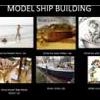-
Posts
506 -
Joined
-
Last visited
Reputation Activity
-
 petervisser got a reaction from nealefoulds in HMS Victory by nealefoulds - DeAgostini - Scale 1:84 - Trafalgar Colors - First wooden ship build
petervisser got a reaction from nealefoulds in HMS Victory by nealefoulds - DeAgostini - Scale 1:84 - Trafalgar Colors - First wooden ship build
Hi Neale,
Great build log of your Victory. Your technique for planking your model is VERY comprehensive and you have helped many of us understand how it can be done with greater accuracy and correctness.
Thanks for taking all the time to post all your excelllent photos.
Peter
-
 petervisser got a reaction from tarbrush in Zeeschouw by petervisser - FINISHED - Billing Boats - Scale 1:22 - Small
petervisser got a reaction from tarbrush in Zeeschouw by petervisser - FINISHED - Billing Boats - Scale 1:22 - Small
Hi Wayne. No I don't mind one bit. Hope you enjoy the ride!
The next stage involved adding the deck, the cockpit sole and the lazarette top.
The deck has quite alot of sheer and I had to bend the sheet so it conformed to the tops of the bulkheads. For this I use the plank bender extordinnaire, the electic kettle! Just make sure you wear some heavy leather gloves. The sheet and kettle exhaust in pretty toasty!
I've used a few plank bending techniques in the past including Billing's tip of using a candle flame. I had a few singed planks and finger tips using that method. The kettle is my favourite by far.
In the photo above the deck is in place as well as the cabin and cabin top. All pieces are laser cut so assembly is a snap. However, I did not use the laser cut piece for the cabin top. It was a single sheet of thin ply, and I am at a loss as to how Mr. Billing meant us to form its shape. There in not only a sheer bend lengthwise, but also a camber. I opted to use strips of mahogony that I had laying around which I was going to lacquer. That way the planks could bend to the sheer as they conformed to the camber athwartships. In the end, I decided to paint the cabin top.
I used mahogany strips to laminate the cabin bulkhead and lazarette. The printed sheets don't compliment the model one bit. It added a bit of work but the results are worth the effort. I also used narrow strips of mahogony to simulate a deck grate on the cockpit sole.
-
 petervisser got a reaction from Bill Tuttle in Coiling Down Running Rigging
petervisser got a reaction from Bill Tuttle in Coiling Down Running Rigging
With the coil in place, and all lacquered up, I use an old paint brush handle to hold the coil in place to dry. It's best to leave a short tail which ensures the coil won't unravel while it's drying.
Here are some pic's showing the last of the process...
Push the coil towards the deck. If it is the right size, it won't have a tendancy to spring back to the horizontal.
The paint brush handle helps hold the coil in place.
Here, several coils are being done at once. Once you get going, it's best to do several at a time to keep the momentum!
I have kept some tails to these coils so they won't unravel.
And voila! All done! On to the next ones...
-
 petervisser got a reaction from dancat in Coiling Down Running Rigging
petervisser got a reaction from dancat in Coiling Down Running Rigging
Hi Everybody,
Ian asked me to re-post my method of coiling down lines on the belaying pins for the running rigging. This in my preferred method for doing so. I do not want to claim that this is the only way to do so. Some of you have devised clever ways of doing this task. However, this method has worked for me for the past 4 models, so I'm sticking with it.
It does require lots of patience and a bit of hand eye co-ordination. But with a bit of practice it will come naturally and seem less arduous. I have devised a simple tool which allows me to coil the line from the opposite side of the model making it easier and practical. It is made using a paint brush handle with the bristles removed. A hole is drilled in the end which allows a flat toothpick to be inserted. The wide side of the toothpick has a V filed into it to form a notch. The toothpick is a weak link which will break first before doing damage to the model due to overstress. I also use copious amounts of matt lacquer and a small paint brush for applying the lacquer.
The first thing I do is wax the line. This removes the fuzzines the line may have and gives it some "grip" when its turned off at the belaying pin. Run the line from its beginning on the mast or yard, through its various blocks and down to the deck and pin rail where it terminates. Make sure the tail of the line is a good 12 inches (30 cms.) so you have something to work with. You will need it to secure the line from the opposite side of the model. Lead the line under the pin rail and form a figure 8 over the top with a half hitch. The beeswax comes into its own here as it helps hold the line at the pin without backing off allowing slack in the line. As insurance I put a drop of CA glue at the half hitch when I'm happy with the lead and tension.
Now the "fun" part. Apply some lacquer along the first 6" (15 cm) from the belaying pin. This gives the line some memory as you coil the line around the pin. With right hand line, coil the line clockwise around the top of the pin. Left hand line is coiled counter-clockwise around the pin. With each coil around the pin, apply a bit more lacquer. This helps retain the number of coils formed so far. Twisting the line in the direction of the coils helps also. The coil diameter should be such that when it is pushed down to the deck, it will stay in place and not spring horizontal . The first coil should be of this diameter and the subsequent coils made to be the same. I form about half a dozen coils at each pin which appears to be adequate.
Hopefully the photos that accompany this post will make the procedure make more sense.
These are the tools used for this fun and sometimes frustrating little exercise. Pictured are the beeswax, lacquer, and "riggers" tools.
If you look closely at the picture above, you can see why it's necessary to work from the opposite side of the model. The line is lead down from the mast, hooked round the bottom of the pin and half htiched round the top half of the pin. The wax helps holds the knot in place until the CA glue is applied.
Next a bit of lacquer is applied to the line to help make it a bit more manageable.
More later, supper's ready....
-
 petervisser got a reaction from capnharv2 in Coiling Down Running Rigging
petervisser got a reaction from capnharv2 in Coiling Down Running Rigging
Hi Everybody,
Ian asked me to re-post my method of coiling down lines on the belaying pins for the running rigging. This in my preferred method for doing so. I do not want to claim that this is the only way to do so. Some of you have devised clever ways of doing this task. However, this method has worked for me for the past 4 models, so I'm sticking with it.
It does require lots of patience and a bit of hand eye co-ordination. But with a bit of practice it will come naturally and seem less arduous. I have devised a simple tool which allows me to coil the line from the opposite side of the model making it easier and practical. It is made using a paint brush handle with the bristles removed. A hole is drilled in the end which allows a flat toothpick to be inserted. The wide side of the toothpick has a V filed into it to form a notch. The toothpick is a weak link which will break first before doing damage to the model due to overstress. I also use copious amounts of matt lacquer and a small paint brush for applying the lacquer.
The first thing I do is wax the line. This removes the fuzzines the line may have and gives it some "grip" when its turned off at the belaying pin. Run the line from its beginning on the mast or yard, through its various blocks and down to the deck and pin rail where it terminates. Make sure the tail of the line is a good 12 inches (30 cms.) so you have something to work with. You will need it to secure the line from the opposite side of the model. Lead the line under the pin rail and form a figure 8 over the top with a half hitch. The beeswax comes into its own here as it helps hold the line at the pin without backing off allowing slack in the line. As insurance I put a drop of CA glue at the half hitch when I'm happy with the lead and tension.
Now the "fun" part. Apply some lacquer along the first 6" (15 cm) from the belaying pin. This gives the line some memory as you coil the line around the pin. With right hand line, coil the line clockwise around the top of the pin. Left hand line is coiled counter-clockwise around the pin. With each coil around the pin, apply a bit more lacquer. This helps retain the number of coils formed so far. Twisting the line in the direction of the coils helps also. The coil diameter should be such that when it is pushed down to the deck, it will stay in place and not spring horizontal . The first coil should be of this diameter and the subsequent coils made to be the same. I form about half a dozen coils at each pin which appears to be adequate.
Hopefully the photos that accompany this post will make the procedure make more sense.
These are the tools used for this fun and sometimes frustrating little exercise. Pictured are the beeswax, lacquer, and "riggers" tools.
If you look closely at the picture above, you can see why it's necessary to work from the opposite side of the model. The line is lead down from the mast, hooked round the bottom of the pin and half htiched round the top half of the pin. The wax helps holds the knot in place until the CA glue is applied.
Next a bit of lacquer is applied to the line to help make it a bit more manageable.
More later, supper's ready....






